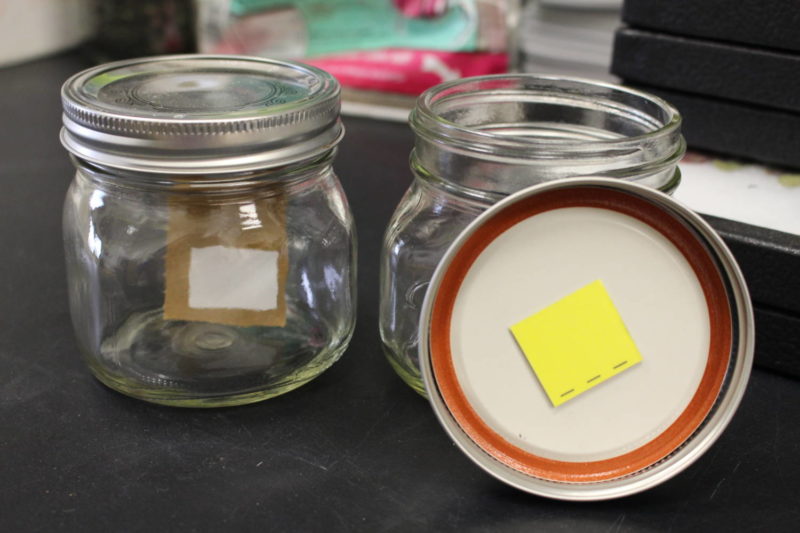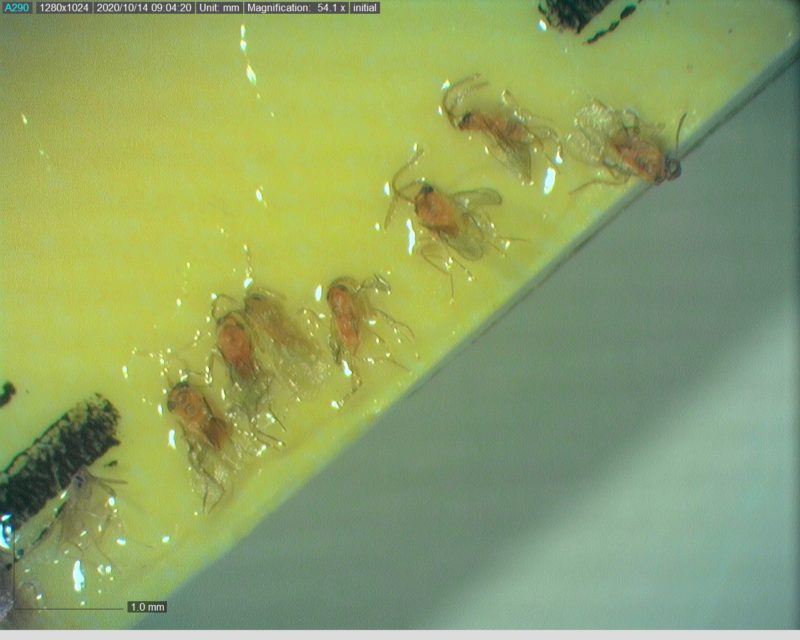Effect of Product Handling and Distribution on Biologicals’ Success
Quality assessment of purchased biological control agents is important when implementing a biological control program. Before release into greenhouse production systems, greenhouse producers should determine if biological control agents including parasitoids, predators, and/or entompathogenic nematodes received from a biological control distributor or supplier are alive and functional. If biological control agents of inferior quality are released, then insect and mite pest populations will cause unexpected levels of plant damage leading to a false assumption that biological control is not effective.
The success of a biological control program depends on the quality of the biological control agents released. Furthermore, suppliers (i.e., companies that ship biological control agents to greenhouse producers directly or through a distributor) and distributors (i.e., companies that receive shipments of biological control agents from suppliers and then ship to greenhouse producers) need to ensure proper product packaging of biological control agents. Proper packaging will minimize exposure to extremes in temperature and/or relative humidity that can be encountered during shipping.
Biological control agent quality may not be exclusively associated with the supplier or distributor, but can be due to the shipping process, which is beyond the control of the distributor or supplier. For instance, exposure to extremes in temperature and/or relative humidity can compromise biological control agent quality, leading to biological control agents arriving dead or in such poor condition that they cannot regulate insect or mite pest populations.
In fact, the quality of biological control agents can vary depending on the supplier, time of year, and formulation or packaging of products from suppliers. Therefore, greenhouse producers should assess the quality of purchased biological control agents before releasing or applying them into the greenhouse to ensure suppression of insect or mite pest populations and prevent plant damage.
The quality of the same biological control agent and the numbers provided may differ depending on the commercial supplier. However, few studies have assessed the quality of biological control agents from suppliers. Therefore, the objective of the following preliminary study was to determine emergence of the whitefly parasitoid, Eretmocerus eremicus, adults from parasitized pupae received from shipments provided by two different biological control suppliers.
MATERIALS AND METHODS
The following study was conducted in our laboratory at Kansas State University and the laboratory of a biological control distributor in 2018. Two shipments of sweet potato whitefly, Bemisa tabaci, pupae parasitized by the parasitoid, Eretmocerus eremicus, which were adhered/glued to release cards were received from two biological control suppliers (Supplier A and Supplier B). Both shipments from the suppliers were initially sent to the biological control distributor. The biological control distributor evaluated five release cards from each supplier associated with each shipment. In addition, five release cards from each supplier were sent from the biological control distributor to our laboratory at Kansas State University for evaluation.

Upon receipt of the shipments from the suppliers, each release card from the five received from each supplier (Supplier A and B) was placed into a 500 mL Mason jar and a 2×2-inch section of a yellow sticky card was attached to the inner lid with double-sided tape (Figure 1). The yellow sticky card section was used to determine the number of E. eremicus adults that successfully emerged and were functional. The number of functional adults is the actual number of individuals that can be used in a biological control program based on their ability to fly and search for a host. Release cards remained in the Mason jars for two weeks at 77 ± 5° F, 50 to 60% relative humidity under a 16:8 (light:dark) hour photoperiod on a laboratory bench, with five replications per release card associated with each supplier (Supplier A and B).
After two weeks, the number of E. eremicus adults captured on the yellow sticky cards (Figure 2), the number of adults present on the bottom of the Mason jars, and number of adults that failed to emerge from the parasitized pupae on the release cards in each Mason jar were counted. The area the pupae were adhered/glued to on the release cards differed between Supplier A (78.5 mm2) and Supplier B (28.3 mm2). Therefore, the data were standardized at 10 mm2 between the two suppliers. Data were analyzed using Microsoft Excel 2016 with significant mean differences separated using a Student’s t-test at α=0.05.

RESULTS AND DISCUSSION
The first shipment from Supplier A had a significantly fewer mean number of functional adults of E. eremicus captured on the yellow sticky cards than Supplier B from release cards evaluated at the Kansas State University Laboratory, as well as from the release cards evaluated by the biological control distributor (Table 1). There was also a significant difference between the mean number of adult E. eremicus found on the bottom of the Mason jars from release cards evaluated at the Kansas State University Laboratory (Table 1).
Conversely, the second shipment from Supplier B had a significantly higher mean number of functional adult E. eremicus captured on the yellow sticky cards than Supplier A from release cards evaluated at the Kansas State University Laboratory, as well as from release cards evaluated by the biological control distributor (Table 2). There were also significant differences between the number of adult E. eremicus found on the bottom of the Mason jars at the Kansas State University Laboratory and the number of adult E. eremicus that failed to emerge based on estimates associated with the release cards evaluated at the Kansas State University Laboratory and by the biological control distributor (Table 2).
Our preliminary study demonstrates that formulations (release cards) of biological control agents and emergence of functional adults can vary depending on shipments from the supplier. Greenhouse producers typically purchase biological control agents from several commercial suppliers or distributors. Nonetheless, the logistics associated with shipping biological control agents is a major issue related to their quality. In addition, parameters related to quality, including parasitoid longevity, fecundity, ability to fly and locate hosts, and capacity to parasitize the target host, cannot be determined until emergence of adult parasitoids.
Greenhouse producers should conduct a quality assessment similar to the procedure we have described to ascertain the number of functional adults that emerge from release cards. This will help assess if the release cards placed among the crop result in functional adults emerging that will provide sufficient regulation of the whitefly population. Therefore, to ensure the success of a biological control program, greenhouse producers should conduct quality assessments after releasing purchased biological control agents to determine if they are alive and functional.
There are resources available for greenhouse producers that provide guidelines on how to conduct quality assessments of commercially available biological control agents. However, quality assessment requires a commitment by management and training of employees, which can be handled through Extension programming.









 Video Library
Video Library 


















